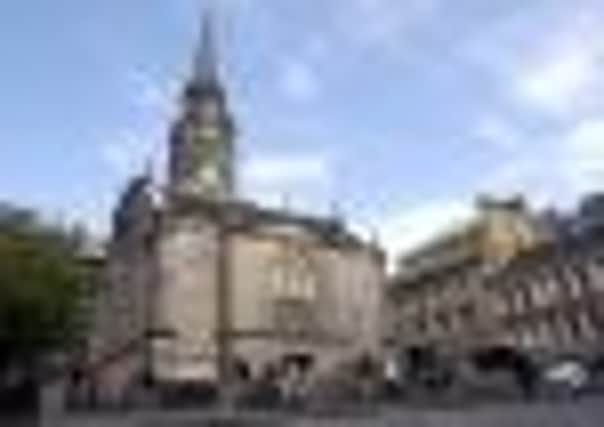Edinburgh is ‘among worst in Europe’ for visitor experience


Charles McKean, a leading historian, academic and author, believes the Scottish capital is being let down by a lack of historical interpretation, the level of roadworks on major thoroughfares, a failure to clear up rubbish at peak times and unwelcoming closes.
In a wide-ranging critique of the city, he has urged the permanent removal of buses from Princes Street and warned it would be a major mistake if the trams opened without a stop at the city’s main train station, Waverley, as is the case under current plans.
Advertisement
Hide AdSpeaking after announcing his departure as chairman of Edinburgh World Heritage (EWH) after six turbulent years, Prof McKean said few new buildings of any note had emerged during his tenure, a period during which he said the council had been “paranoid” about turning down major developments because of the number of jobs involved.


He said EWH had struggled to cope with having its funding from Historic Scotland and the city council slashed by more than half over the last six years, despite a culture of “we are the piper and the piper calls the tune” from the body’s funders.
The last few years have seen growing tensions between the heritage bodies such as the trust – and allies like the Architectural Heritage Society of Scotland and the Cockburn Association – and the city council and Historic Scotland.
However, the trust’s future was recently secured with a £2.1 million funding deal from Historic Scotland for the next three years, while future funding from the council is due to be confirmed within weeks, despite previous warnings that it might have to end. Prof McKean said: “We’ve had a lot of successes in the last six years, considering at that time there was lot of uncertainty as to what role we should have. Some people saw us merely being there to act as a brake on what the council was doing.
“We have been really successful in the restoration work that has been carried out to historic buildings and monuments in that time, which we have led on, and we are now much less reliant on public funding.
“There has certainly been an element of ‘largesse’ to our relationship with the council and Historic Scotland, where they’ve been a bit like a king handing out pots of gold, and an element of ‘we are the piper and the piper calls the tune’. There are better relationships now, though they could be better. But it is not a case of us simply saying ‘no’, now it is more of a case of ‘how’. But there is still a lot to do and it has been a failure of the last few years that we’ve not managed to improve the general visitor experience, parts of which are among the worst in Europe, particularly with things like historic interpretation, and the amount of general clutter.
Advertisement
Hide Ad“You only have to look at other cities like Vienna and Lyon to see the difference. If you are curious about something here, there is nothing to tell you what it is.”
Jim Lowrie, the city council’s planning leader, said: “They [EWH] have changed a lot in the past few weeks. They work closely with the council behind the scenes now, and they can still comment on developments which are coming through, which is better than simply objecting to them. They are also making a big difference to the historic fabric of the city.”
Advertisement
Hide AdAdam Wilkinson, director of Edinburgh World Heritage, paid tribute to Professor McKean’s “sterling work”.
• Transforming the derelict former Tron Kirk into a major visitor attraction is set to be the next major project for Edinburgh World Heritage.
Just months after the organisation started transforming a rundown former brothel on the Canongate, it already has its sights set on restoring the fortunes of the A-listed Tron.
Professor McKean said the long-term aim of turning the 17th century former church into a bustling visitor attraction would end EWH’s reliance on the public purse, but also provide the city with a proper tourism centre.
The trust hopes to strike a deal with the council, which owns the historic landmark, so that it can begin fundraising to transform the building – which has been lying empty since 2006.
Professor McKean said: “The council hasn’t got the funding available to do anything with it. We’d be responsible for raising the money to make it happen and, in time, it would generate enough to ensure we weren’t reliant on public funding in future.”